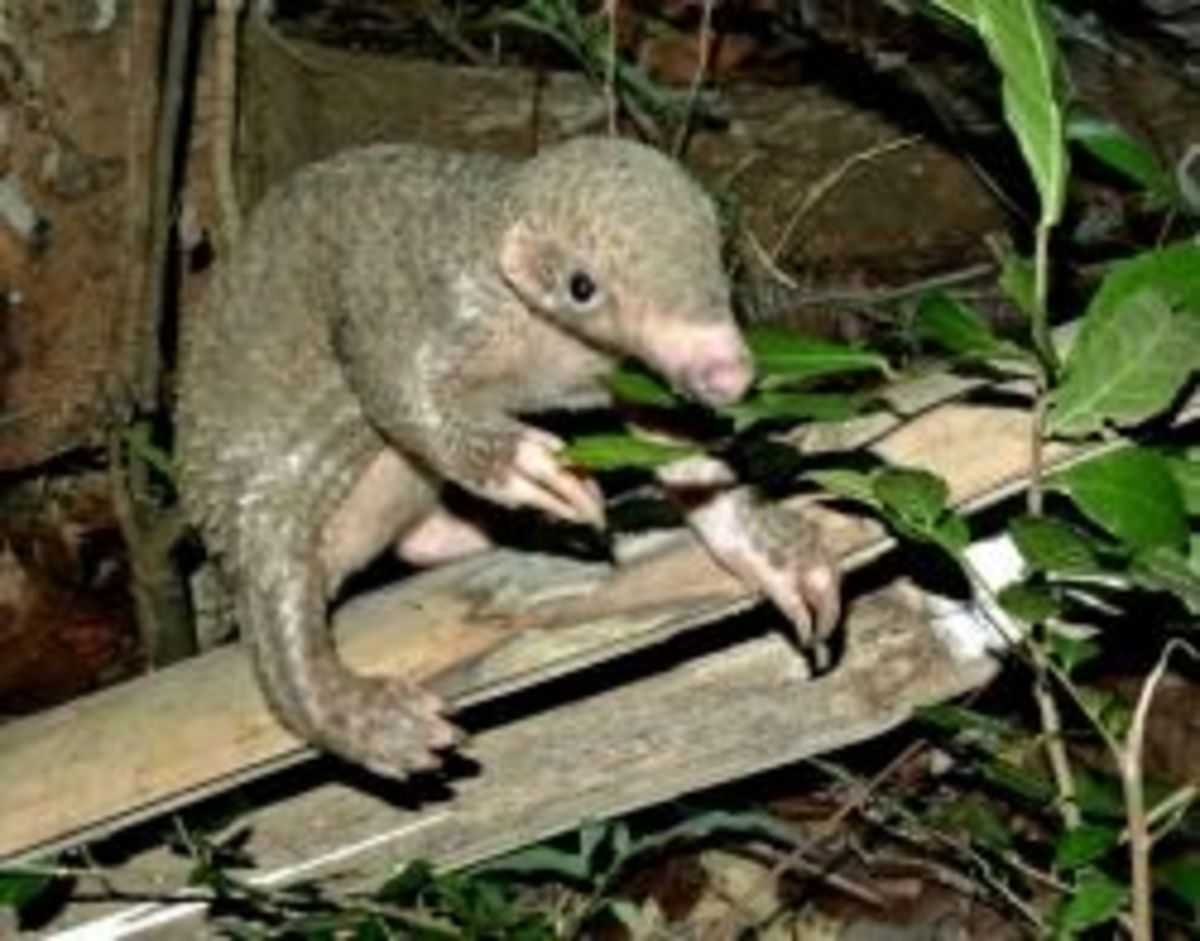T Is For Tapir

The tapir is a short mammal with a prehensile nose that is related to horses and rhinoceroses. In Chinese myths, it is said that tapirs can eat someone's dreams. In their native habitats, they are known for being much more docile than that.
Mother and Juvenile Brazilian Tapirs in the Marsh Grass
Nicole Duplaix
16x12 Photographic Print
Although many people think the tapir (tap-ear) looks a lot like a pig, it's closest mammal relatives are horses and rhinoceroses. Those animals and the tapir are all classified as perissodactyls, which refers to the type of hoof structure they share. They are all odd-toed ungulates.
Baby tapir have speckled coats which they lose as adults, when they take on the single or duo-toned body color depending on their species. The picture in the intro shows a two-tone adullt tapir, while if you look below at the videos, you'll see some of the solid color adults too.
Tapir have a long, flexible nose, called a proboscis. They not only smell with this prehensile nose tip, but they can use it a bit like a finger for digging and grabbing leaves.
What do Tapirs eat?
Tapirs are herbivores and depending on where they live, they might eat leaves, grasses, bamboo, twigs and lots of different types of fruit.
Learn About Tapirs
- What's a tapir?
Although tapirs are often mistaken for pigs and anteaters, they're in the odd-toed hooved animal family (perissodactyls), as are the horse and rhinocerous. All four species of tapir are endangered. - Tapir
Tapirs are related to horses and rhinos, not to pigs. There are four species, three of which are found in Central and South America. Tapirs can weigh up to 300kg.� - The Tapir Gallery ~ The World of Tapirs - Welcome!
The Tapir Gallery - Home of The Tapir Preservation Fund, Tapir Gallery Gift Shop, Club Tapir, and much, much, more. Saving endangered species helps save the rainforest! - Tapir Printout- EnchantedLearning.com
Tapir Printout. The Tapir is a hoofed herbivore with a long, rubbery nose. - Tapir Specialist Group
tapirs.org is the official site of the Tapir Specialist Group, a volunteer consortium of tapir researchers, scientists, zoo professionals and conservation advocates.
Take A Look At The Tapir
Tell us about your tapir encounters! Did you get to see one in the wild or at a zoo?




